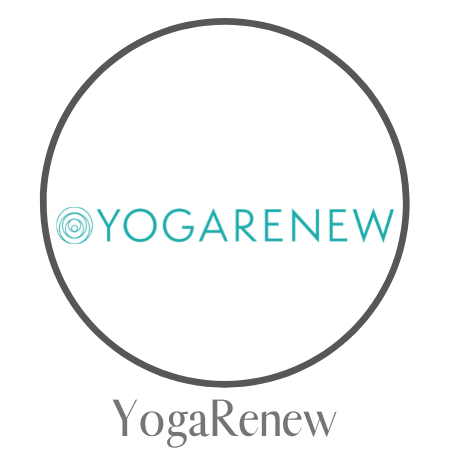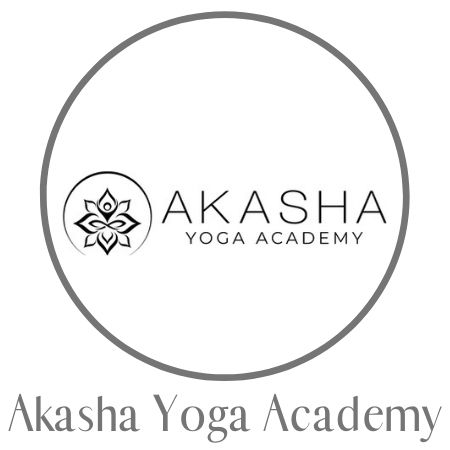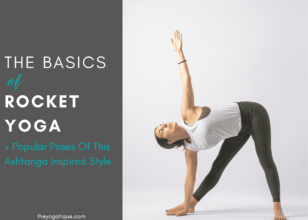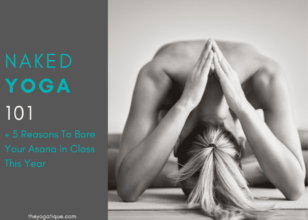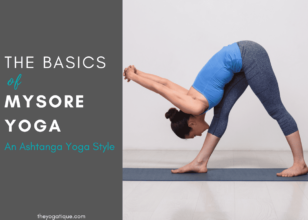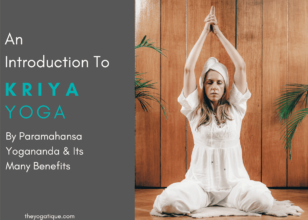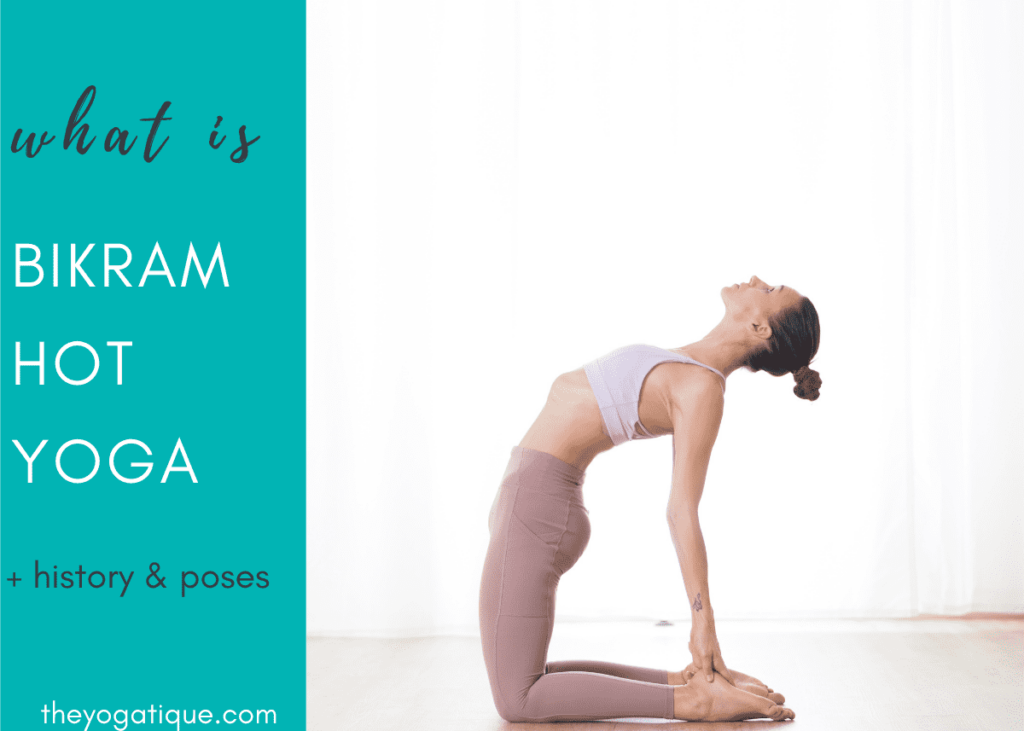
Do you love hot weather and that satisfying feeling after a challenging, sweaty workout? If so, Bikram hot yoga may be your new favorite yoga practice!
Bikram is a unique yoga style practiced in a sweltering hot room (think sauna-like temperatures). As a yoga teacher, I find Bikram yoga to be like Marmite (or Vegemite); you either love it or hate it (or both!)
Does hot yoga sound like your cup of tea?
If so, read on to discover what is Bikram hot yoga, what makes it unique, and what to expect from these heated classes.
Article content:
(Click any link below to jump directly to section)
What makes Bikram yoga different?
Is Bikram yoga actually good for you?
What is the purpose of Bikram yoga?
Health benefits of Bikram yoga
What is a Bikram yoga class like?
What are the 26 asanas in Bikram yoga?
How long do you hold poses in Bikram?
What is the hardest Bikram pose?
Takeaway what is Bikram hot yoga?
FAQ about Bikram hot yoga

IS YOGA TEACHER TRAINING ON YOUR RADAR?
Online Yoga Teacher Training Offers
- Affordability
- Flexibility
- Certification
- Lifetime access
⬇Click below to discover the best Yoga Alliance registered online yoga certification courses⬇
What makes Bikram yoga different?
The main difference between Bikram yoga and a traditional yoga class is that Bikram classes are always carried out in a hot room with high temperatures and high humidity.
According to Bikram Choudhury, the founder of this style, there are many reasons for this. First, the heat and flexibility significantly improve your flexibility, allowing you to go deeper into stretches. You also burn more calories and release toxins in the body through sweating.
A common query many students ask me is whether Bikram yoga and hot yoga are the same? In terms of definition, they are not. Bikram is a particular style of yoga with a set sequence. Hot yoga can be any style of yoga practiced in a heated room.
I once taught hot vinyasa classes in a Bikram yoga studio. Everything was the same as a standard vinyasa class; the only difference was the room temperature.
One difference between Bikram yoga and general hot yoga is the flexibility of the temperature and humidity.
Bikram Choudhury, the founder of Bikram yoga, states that Bikram yoga must always be performed in a room heated to 105 degrees Fahrenheit and with 40 percent humidity. Other hot yoga styles can have a lower temperature, typically between 80 and 100°F. When I taught hot vinyasa, I always turned the humidity off to make it more bearable!
Is Bikram yoga actually good for you?
In general, for most people with no health problems, there is no danger in practicing Bikram hot yoga. However, almost all yogis wonder if Bikram yoga is actually good for us upon discovering it, myself included.
Of course, there is a risk of dehydration, so drinking plenty of water before, during, and after hot yoga classes is essential. I also recommend adding electrolytes to your water to replace those you lose from the profuse sweating.
It's also important to be aware that a hot yoga class can raise your core body temperature to over 103 F. For context, the average human body temperature is between 97 F to 99 F. When your body gets too hot, there is a risk of heat-related illnesses, such as dizziness, changes in blood pressure, headaches, or vomiting.
Generally, these heat-related illnesses are most common in those with existing health issues, such as low blood sugar, heart disease, or low blood sugar. So if you have a medical concern, consult your doctor before attending a Bikram yoga session. The same is true for pregnant women, especially those new to yoga.
Now, putting aside these risks, Bikram yoga has many benefits, which we'll discuss next.
What is the purpose of Bikram yoga?
The purpose of the Bikram yoga method was initially created to amplify the benefits of traditional yoga by adding heat. Here are some of the top health benefits you may experience by regularly attending Bikram yoga classes.
5 health benefits of Bikram yoga
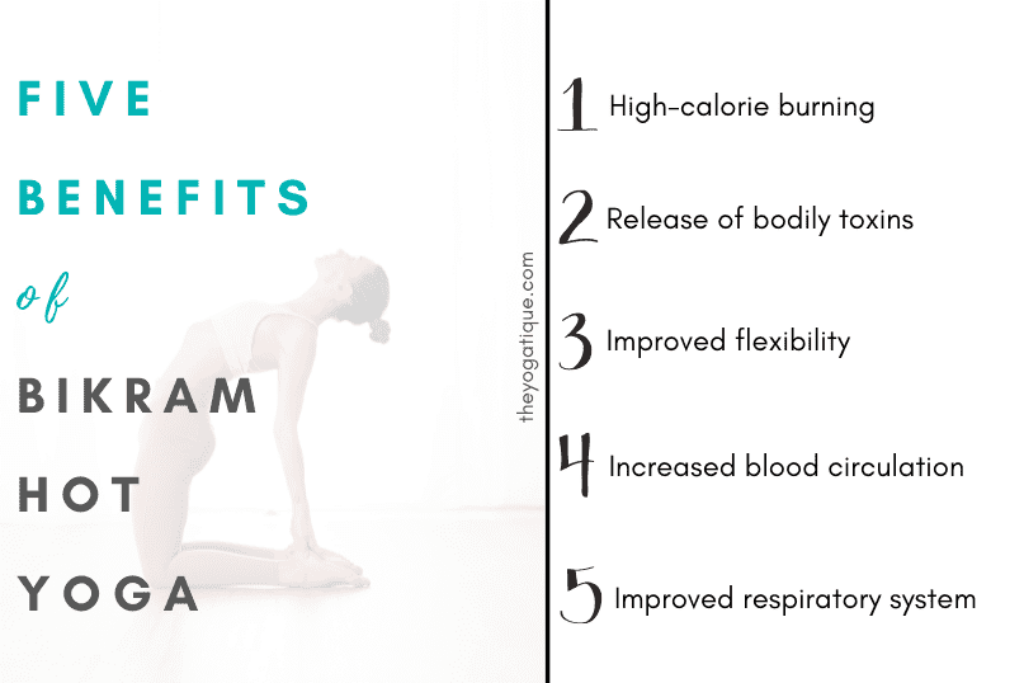
- High-calorie burning and weight loss
- Release of bodily toxins
- Improved flexibility
- Increased blood circulation
- Improved respiratory system
↓Great Yoga Alliance certified yoga teacher trainings you should look into↓
What is a Bikram yoga class like?
Bikram classes are challenging and they follow a set sequence each class. So in every session, you practice the same yoga postures in the same order, just like with Ashtanga.
Moreover, every Bikram yoga class is 90 minutes long and features 26 poses and two breathing exercises (keep reading for the complete list of poses). Most Bikram asanas are the same poses you find in other yoga styles like Anusara, though the names may differ.
One difference between Bikram and regular yoga that really surprised me was the placement of Savasana. Unlike most yoga styles, a Bikram session does not end with Savasana. Instead, it's placed in the middle of the class, serving as a transition from the standing to the floor series.
Lastly, don't expect the Bikram yoga instructor to demonstrate the poses during the class. It is common practice for instructors at a Bikram studio to call out the poses rather than demonstrate them on a yoga mat at the front of the class.
What are the 26 asanas in Bikram yoga?
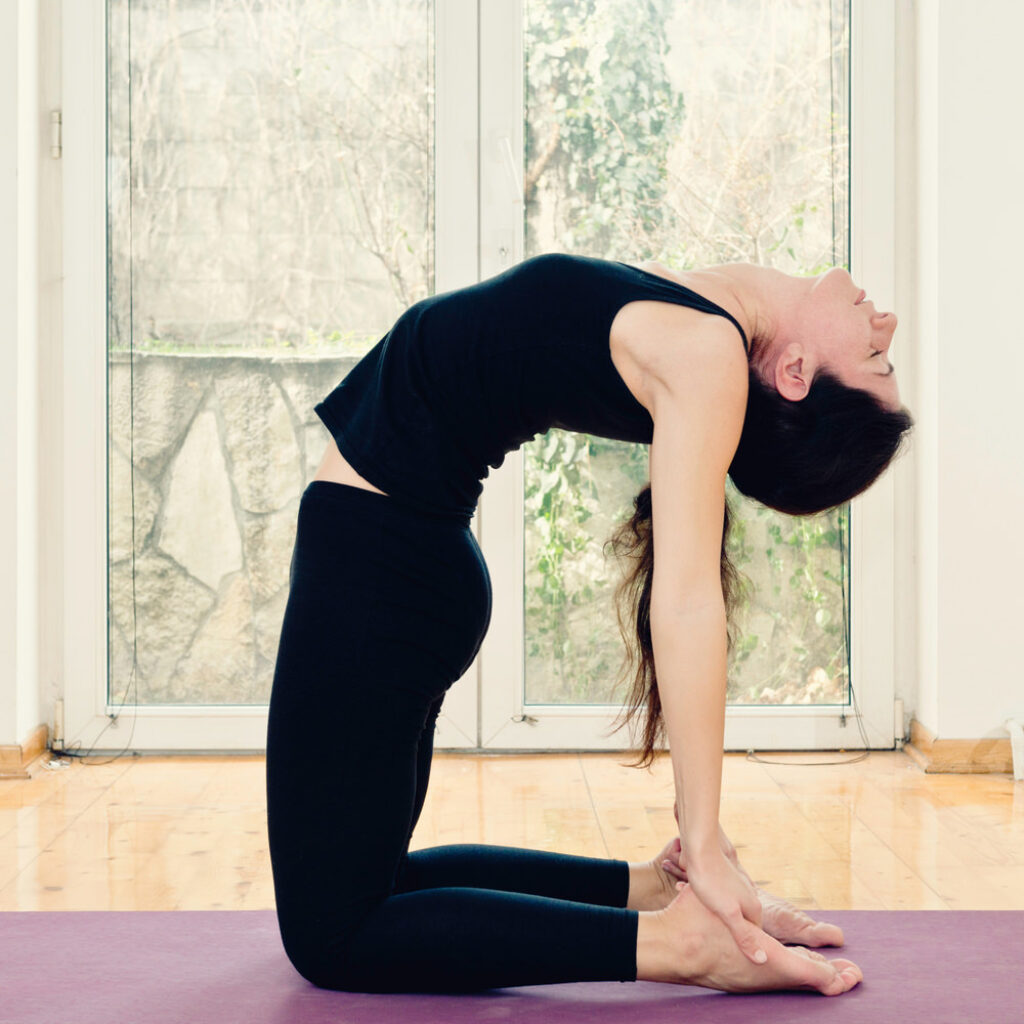
Every 90-minute class following the Bikram method will feature these 26 yoga asanas in the following order:
- Standing Deep Breathing Pranayama
- Half-Moon Pose (Palm Tree Pose)
- Awkward Pose
- Eagle Pose (Garurasana)
- Standing Head to Knee Pose
- Standing Bow Pose (Dancer’s Pose)
- Balancing Stick Pose (Warrior 3)
- Standing Separate-Leg Stretching Pose
- Triangle Pose (Trikonasana)
- Standing Separate Head to Knee Pose (Pyramid Pose)
- Tree Pose
- Toe Stand
- Corpse Pose
- Wind Releasing Pose
- Sit Up Pose (Seated Forward Fold)
- Cobra Pose
- Locust Pose
- Full Locust
- Bow Pose
- Fixed Firm Pose (Supta Vajrasana)
- Half Tortoise
- Camel Pose
- Rabbit Pose
- Sitting Head to Knee Stretching Pose (Janu Sirasana)
- Seated Spine Twisting Pose
- Skull Shining Breathing (Kapalbhati Pranayama)
How long do you hold poses in Bikram?
Bikram yoga postures are held for 10-60 seconds, depending on the asana. Most standing asanas are held for shorter durations than seated postures.
There is no flowing between poses or breath-to-movement style like in a vinyasa class, nor is there vinyasa flows like in Hatha or Ashtanga.
What is the hardest Bikram pose?
All our bodies are different, so what we find challenging varies from person to person. For example, standing head-to-knee pose may be very difficult for someone who lacks flexibility in the hamstrings.
Likewise, balancing stick pose will be a challenge for someone who struggles with balance. Or for someone with limited spinal mobility, Camel and Rabbit will prove very hard. A little Restorative yoga could be good for recovery or opening the body to get into those harder Bikram poses!
Still, unlike other yoga styles like Jivamukti, Bikram has no inversions or arm balances which are the most advanced postures. So despite the heat, I personally found it much easier to master the Bikram series than the Ashtanga one!
Takeaway what is Bikram hot yoga?
So what is Bikram hot yoga? It is a set sequence of 26 yoga poses practiced in a 105 F room with high humidity.
I find Bikram gets easier the more you do it. The first few times are challenging as you learn a new sequence and get used to being in a hot room. However, after a few sessions, it becomes more bearable – this is when you will know whether you love or hate Bikram yoga!
FAQ about Bikram hot yoga
What is Bikram yoga vs Vinyasa?
The main differences between Bikram yoga and vinyasa include time, temperature, environment, and sequence type. Bikram yoga is 90 minutes, done in a hot room (105°F/40°C), and features the same 26 postures. Vinyasa yoga does not have a set sequence and is a flow-based style of yoga. While some Vinyasa yoga classes may take place in heated rooms, they won't be heated to the same temperature as a Bikram class.
Does Bikram yoga change your body?
Absolutely. Regular Bikram practitioners will notice weight loss, increased lean muscle mass, and improved flexibility.
Some online yoga studios, online yoga teacher training programs, and brands that we write about may offer us a small percentage should you decide to purchase after reading our content. Thank you for enabling us to exist!

